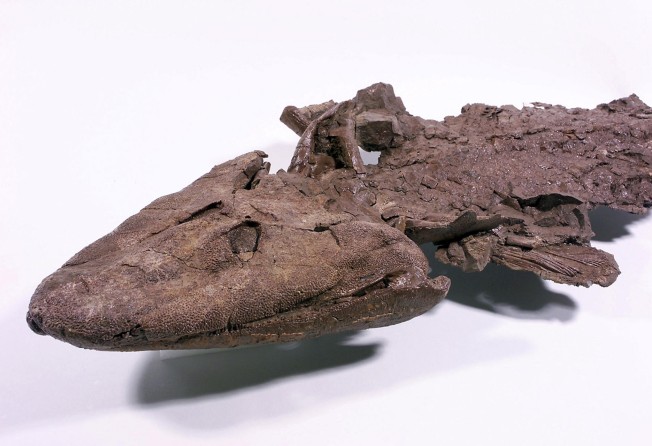
Ancient fish fossil suggests rear fins evolved into legs earlier than thought
New discovery of 375 million-year-old Tiktaalik roseae suggests development of hind limbs, indicating missing evolutionary link in animals

All four-limbed animals - reptiles, birds, amphibians and even humans - descended from common ancestors which made the transition from fins to feet.

Now the 375 million-year-old partial fossilised remains of a fish have emerged to help fill in some of the blanks.
Palaeontologists have uncovered new fossils of Tiktaalik roseae which, while still a fish, is considered a transitional animal that has traits common to the first four-footed ones.
The more complete picture of Tiktaalik suggests that the creature had strong, mobile hind fins. The finding challenges the view that such enhanced rear appendages arose much later, perhaps even after animals had made the transition to land.
Known as the "front-wheel-drive" hypothesis, that view held that front fins evolved into limbs first, while back fins stayed small and unimportant.
"These are four-wheel-drive animals, not just front-wheel-drive only," said study author and palaeontologist Ted Daeschler of the Academy of Natural Sciences in Philadelphia. The results were published online on Monday in the Proceedings of the Natural Academy of Sciences.
Stretching up to 2.7 metres long, the original 2004 discovery of Tiktaalik in the Canadian Arctic included fossils from its front half only - skull, shoulders and front fins.
The ancient fish caused a stir in the scientific community due to its hodgepodge of features: it had scales and gills like a fish, strong limb-like front fins, a flexible neck and a flat, alligator-like head with eyes on top.
The latter characteristics are reminiscent of amphibians, or more generally, tetrapods. These are animals that have (or whose ancestors had) four legs and include all land-living vertebrates such as frogs, tigers and seals.
But Tiktaalik's incomplete remains meant scientists could only guess what its rear portion was like. A few years after the original discovery, Daeschler and his team finally excavated the surprisingly robust back portion of the same animal.
Earlier evidence suggested that the rudder-like hind fins remained small while front fins evolved into strong limbs that could propel the fish along the ground; hind limbs emerged afterwards. But Tiktaalik's enlarged pelvis points to the possibility that hind limbs started to evolve simultaneously and were being used for propulsion.
"The size of the pelvic girdle, the region that holds the fins, was as big as the region that holds the front fin," he said. "That was not what we have predicted."
This means the uppermost part of the pelvis, the ilium, is big enough to have contact with the vertebral column - crucial for walking on all fours.
Also, the hip socket of Tiktaalik is strikingly different from that of a typical fish. Although the researchers did not find a femur bone, the socket shape and size means Tiktaalik probably had a larger rear fin range of motion than traditional fish.
"For you and I, we have this nice ball-and-socket arrangement, but for more fin-like fishes, that is not a deep-rounded socket - it's flatter," Daeschler said. "For Tiktaalik, it was a really deep, round socket."
However, some of the bones that made up the pelvis remained fish-like and primitive in a piecemeal fashion, as seen in the front half of the fossil - an example of what scientists call mosaic evolution. It means that different parts of the body change at different rates through many years.
"Tiktaalik is like a poster child of an animal that has mosaic features," Daeschler said.
Ten million years after Tiktaalik, what could truly be called four-limbed animals finally emerged in the form of clunky, salamander-like creatures. They were still tied to the water but could also handle the gravitational force and dryness of land.